Category Archives: Caterpillars
Fall Armyworms: 10 Effective Ways to Control and Prevent Them
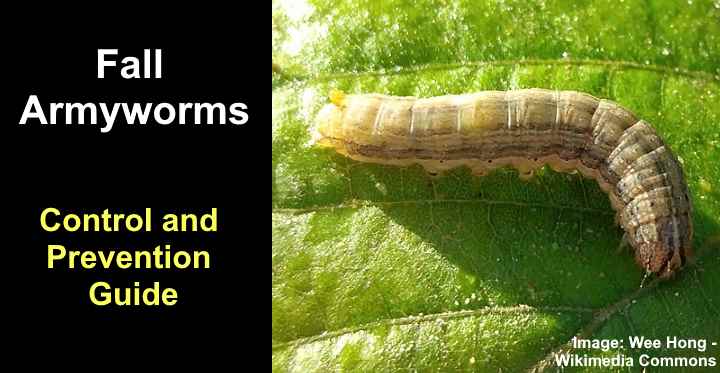
Fall armyworms can have a devastating impact on your lawn. These large, destructive, brown-striped caterpillars eat through plant tissue, damaging grass and causing brown patches to appear. These caterpillars are the larval stages of moths, and they damage lawns, pastures, and hayfields throughout the tropical regions of the western hemisphere from the United States to Argentina.
19 Black and Orange Caterpillars (With Pictures) – Identification Guide

Black and orange caterpillars represent the larval stage of various moths and butterflies. These chubby, worm-like crawling insects can feature black and orange stripes, fuzzy orange bodies with black bands, or tufts of spiny hairs protruding from their black and orange forms. Certain orange and black fuzzy caterpillars may even appear intimidating, with noticeable black spikes adorning their backs and heads.
Tent Worms: 10 Effective Ways to Get Rid of Tent Caterpillars
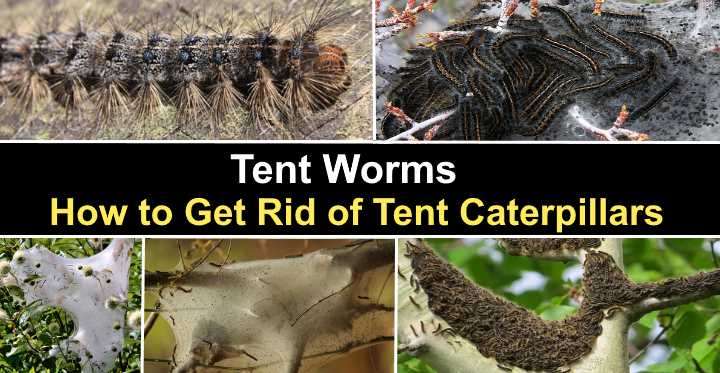
Tent worms are species of caterpillars in the genus Malacosoma. Also called tent caterpillars, they have long slender bodies up to 2” (5 cm) long with white marks on their back and hairy spines. Distributed throughout much of the United States and Canada, tent worms get their name from the large tent-like webs that they spin to protect larvae from predators and the elements.
17 Furry Caterpillars with An Identification Chart and Pictures
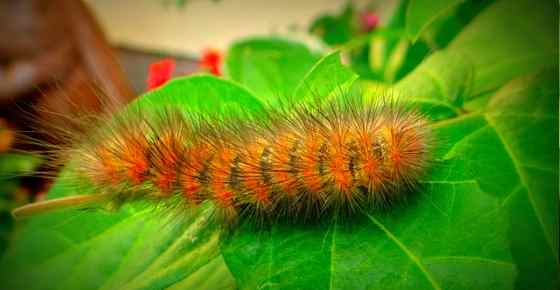
Furry caterpillars are a fascinating type of insect that usually turn into moths. Most types of furry caterpillars feed on the leaves of plants and trees. Although many hairy caterpillars look scary, most are quite harmless. There are some spiky caterpillars that are poisonous and can give you a bee-like sting or cause skin irritation. So, until you identify the exact caterpillar species, you should avoid handling the furry ones without protective gloves.
16 Stinging Caterpillars: An Identification Guide With Pictures
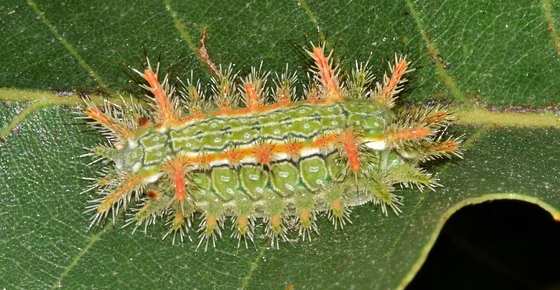
While most types of caterpillars are harmless, there are some species of stinging caterpillars. Caterpillars that sting are generally hairy or have spikes on their bodies. Handling one of these dangerous caterpillars could leave you with a nasty sting similar to a bee’s sting. Before picking up any kind of caterpillar, it is important to identify the species to know if it is harmless or not.
14 Types of White Caterpillars (Including Fuzzy) – Pictures and Identification
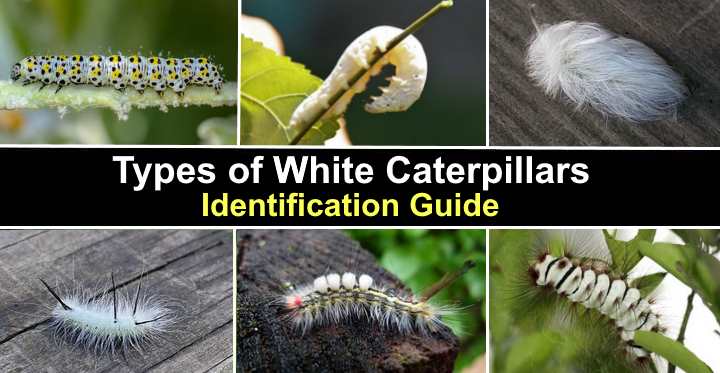
White caterpillars are the larvae of various moth and butterfly species. There are several different types of white caterpillars, all with unique identifying characteristics. For example, many fuzzy white caterpillars like hickory tussock moth caterpillars have stinging spines and cause skin irritation when handled. Others like white flannel moth caterpillars have venom-filled spines. However, not all white furry caterpillars are stinging varieties. Some white caterpillars like the silkworm have smooth bodies and identifiable markings.
Types of Black Spiky Caterpillars (With Pictures) – Identification Guide
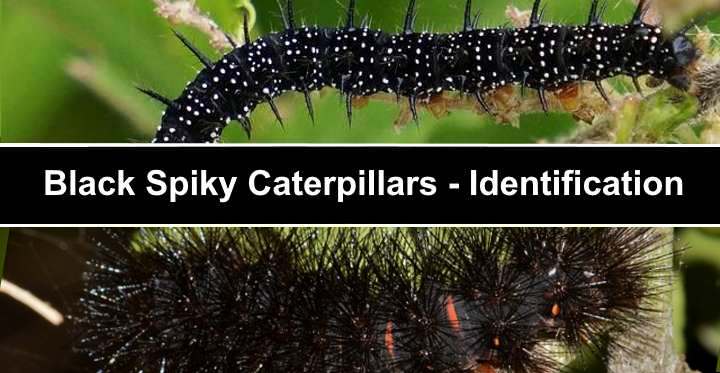
Black spiky caterpillars are unusual types of butterfly or moth larvae. The dark-colored, worm-like bugs can have a menacing appearance with their jet-black bodies, light or white markings, and fleshy spines or spikes on their body. Black caterpillars are typically not venomous despite their spikes because they don’t contain poison-filled spines.
18 Types of Brown Caterpillars (With Pictures) – Identification Guide
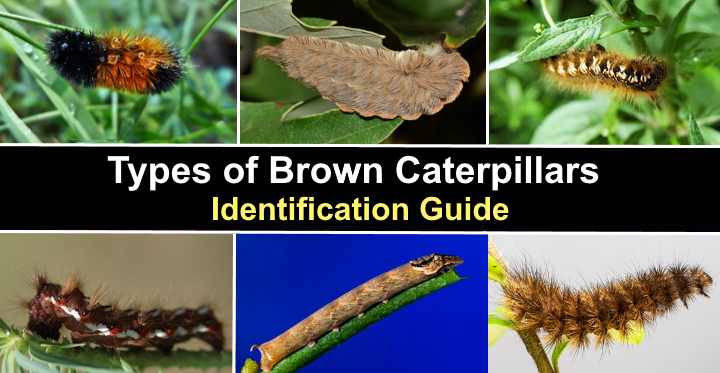
Brown caterpillars are worm-like larvae with furry, smooth, or patterned bodies. The long cylindrical insects may look brown and drab, but they transform into stunning moths or butterflies. Although most brown caterpillars are harmless, some species of brown furry caterpillars have stinging hairs or spines that can cause a nasty skin rash if you handle them.
16 Black Caterpillars (Including Fuzzy): Identification Guide with Pictures

Black caterpillars are insects that come in all shapes and sizes. All species of caterpillars belong to the order of insects called Lepidoptera. After hatching from an egg, caterpillars gorge on a diet of plant and tree leaves. Many types of black caterpillars are interesting to look at and some look quite scary. Some species of caterpillars are black and fuzzy with hair-like spines. Other common black caterpillars have vibrant orange or yellow markings.
Black and Yellow Caterpillars (With Pictures) – Identification Guide
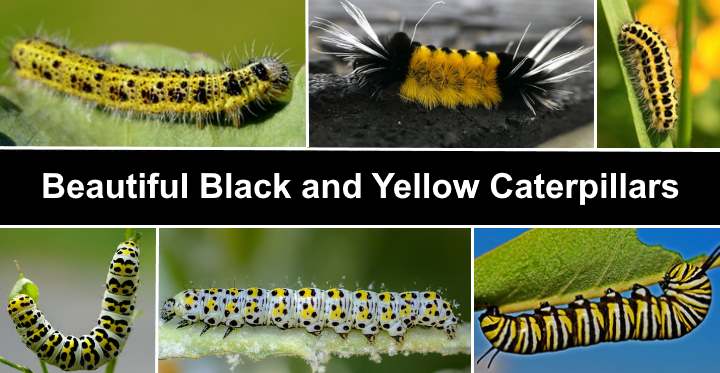
Black and yellow caterpillars are the larvae of butterflies or moths. Black and yellow caterpillars can be large or small crawling insects, and some may have furry bodies. Depending on the moth or butterfly species, the caterpillar could be black with yellow stripes or markings. Or some other caterpillars can be yellow with fuzzy bodies and black spines or horns. One thing in common with all black and yellow caterpillars is that they turn into spectacular winged insects.
